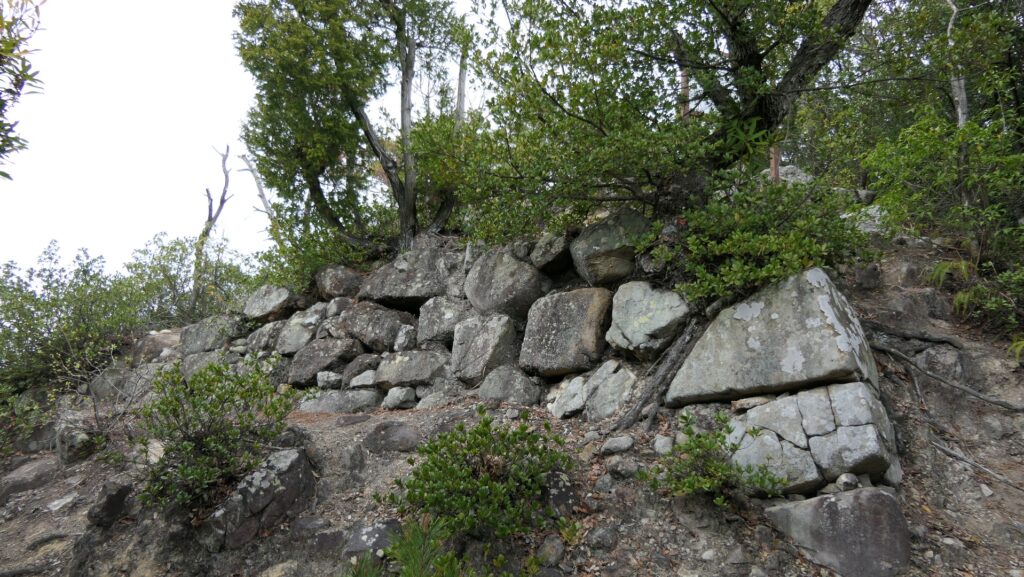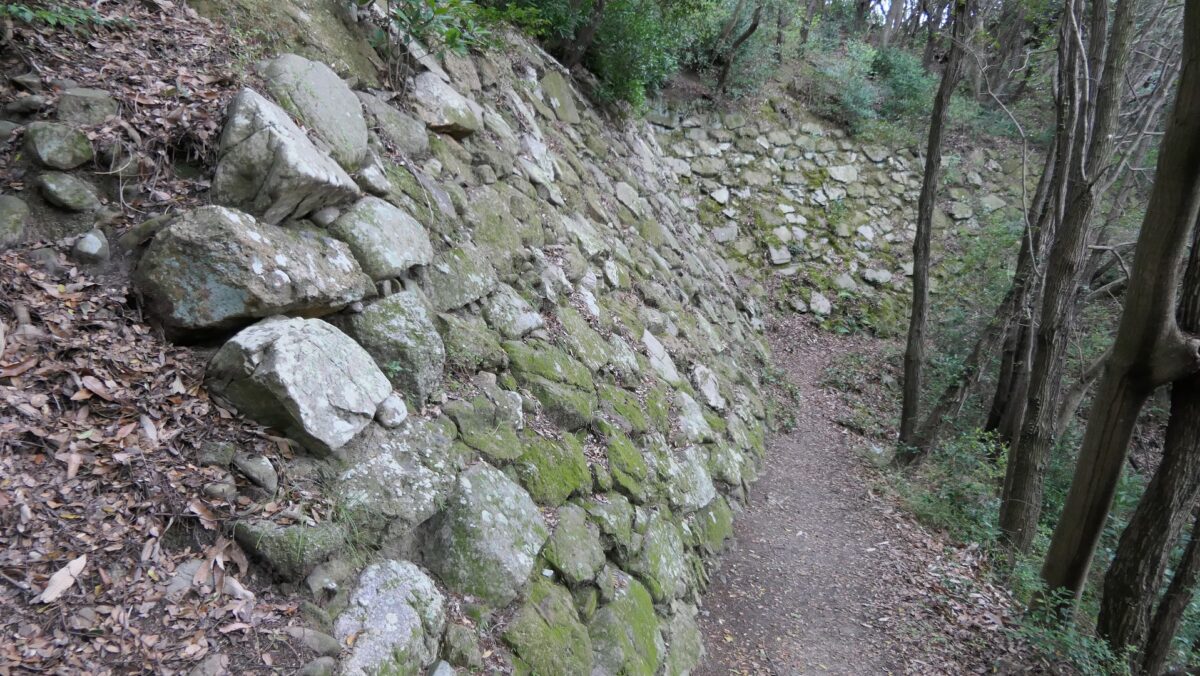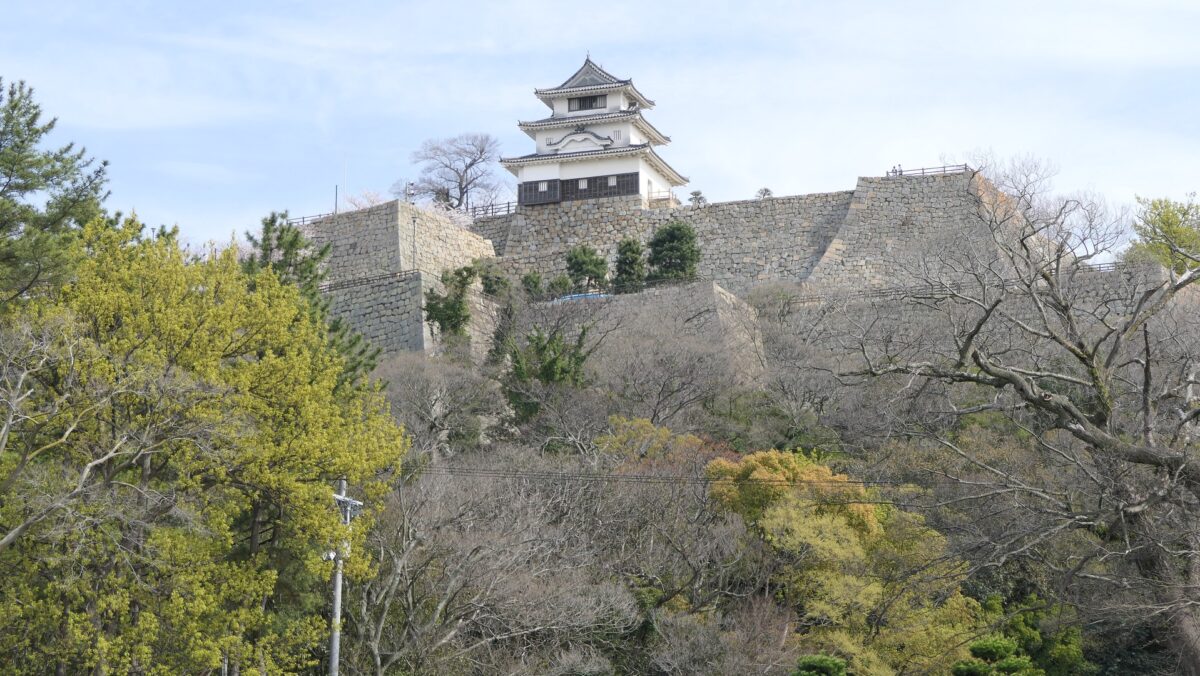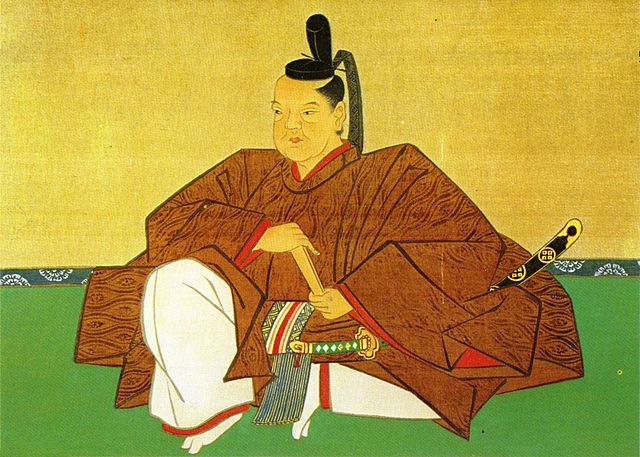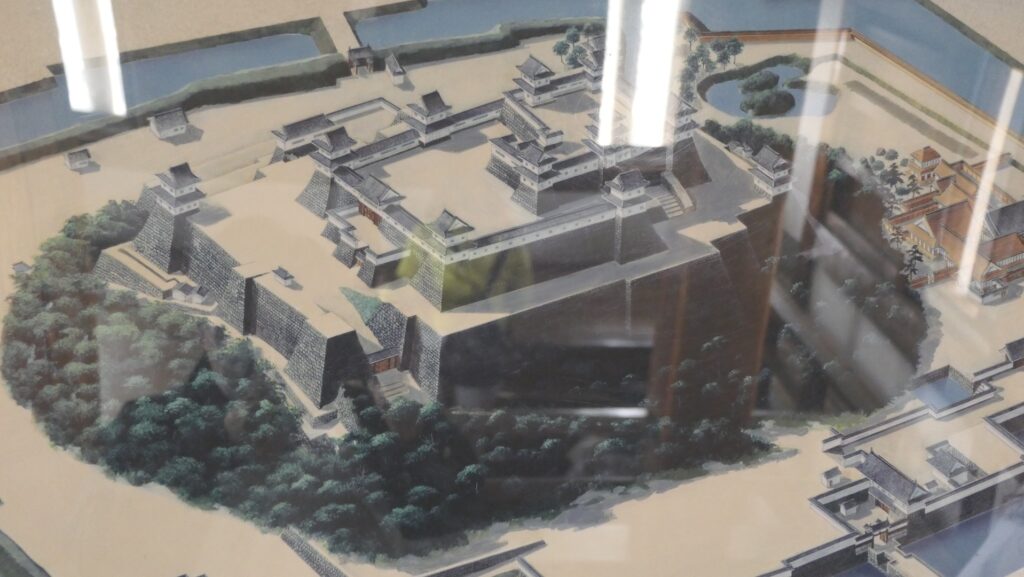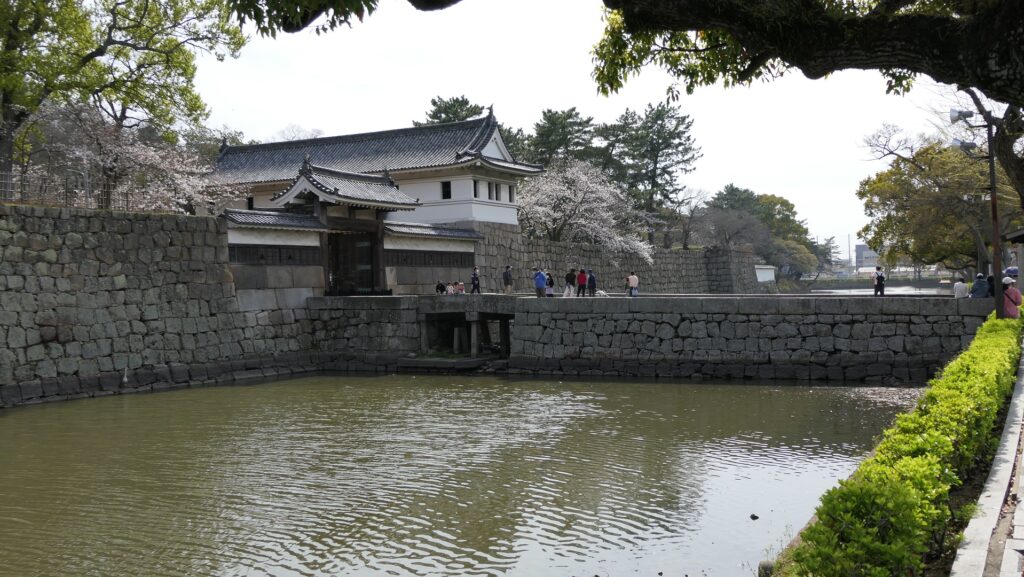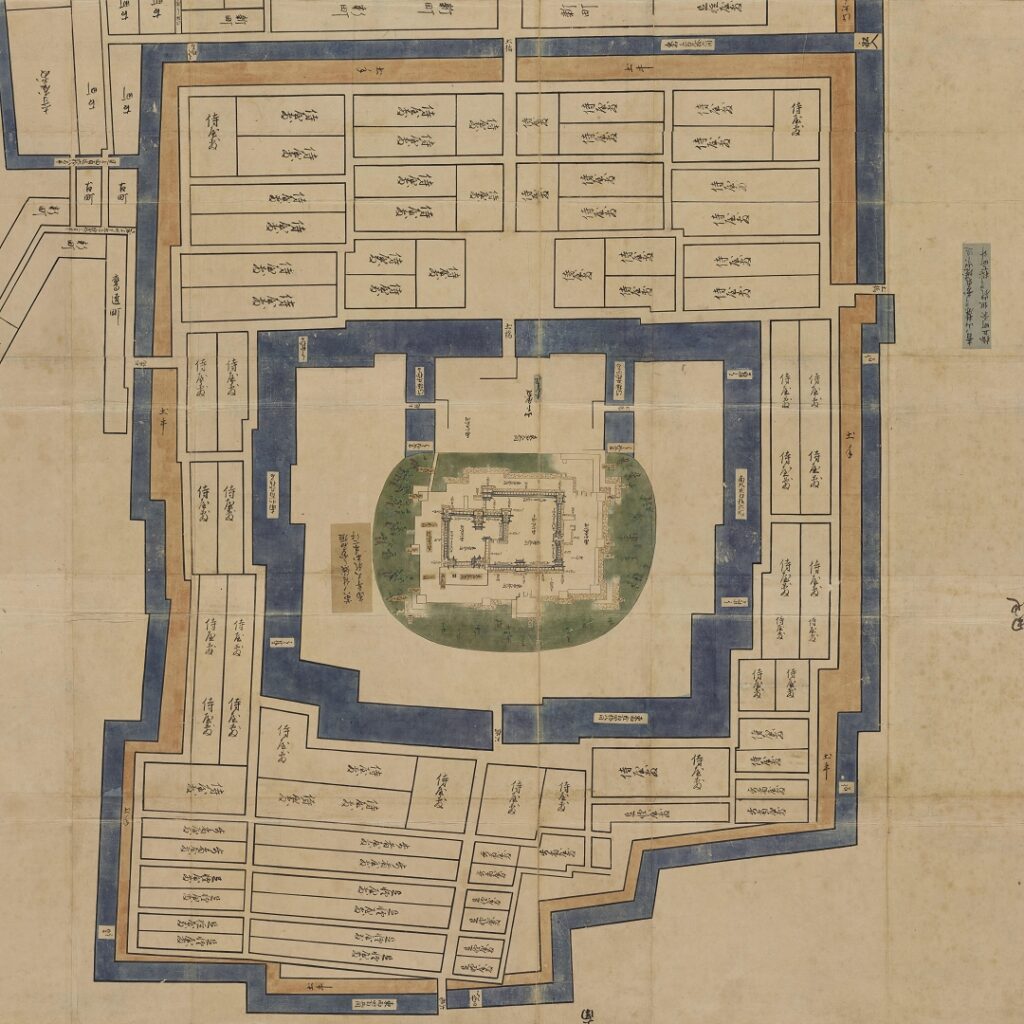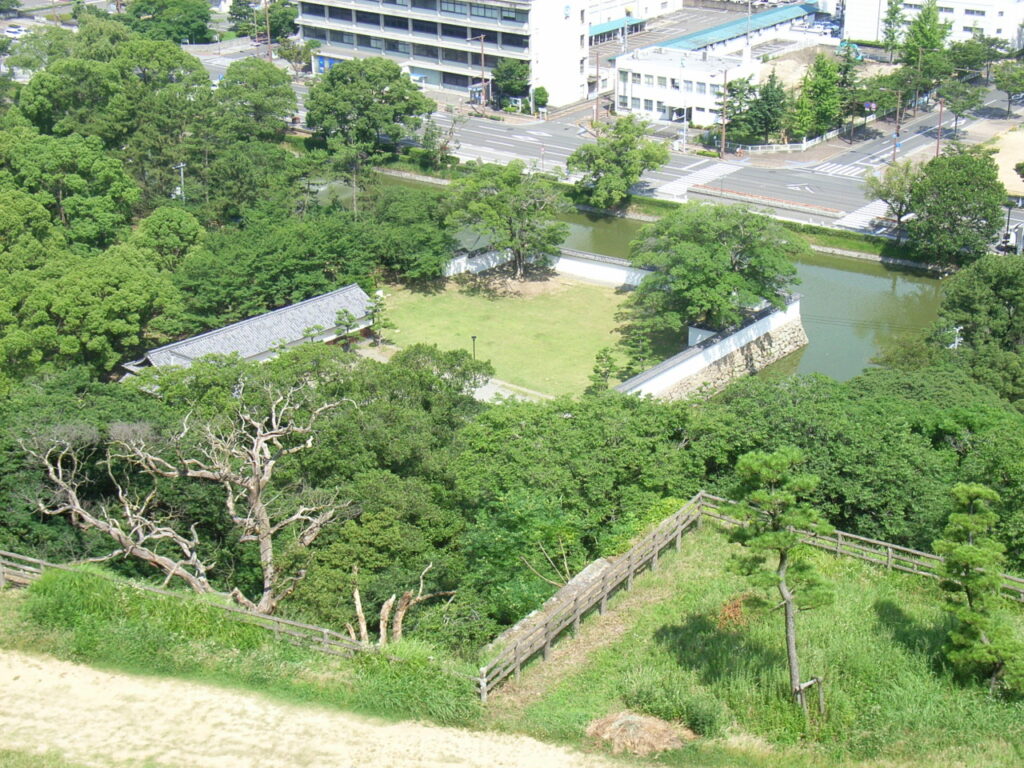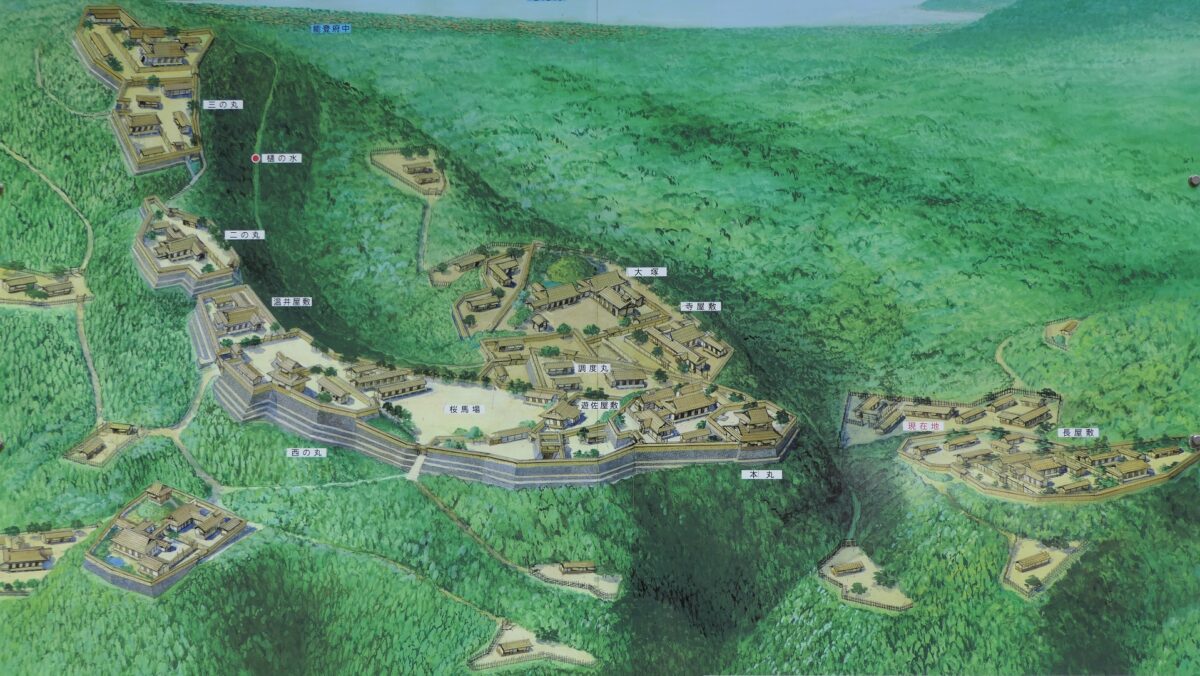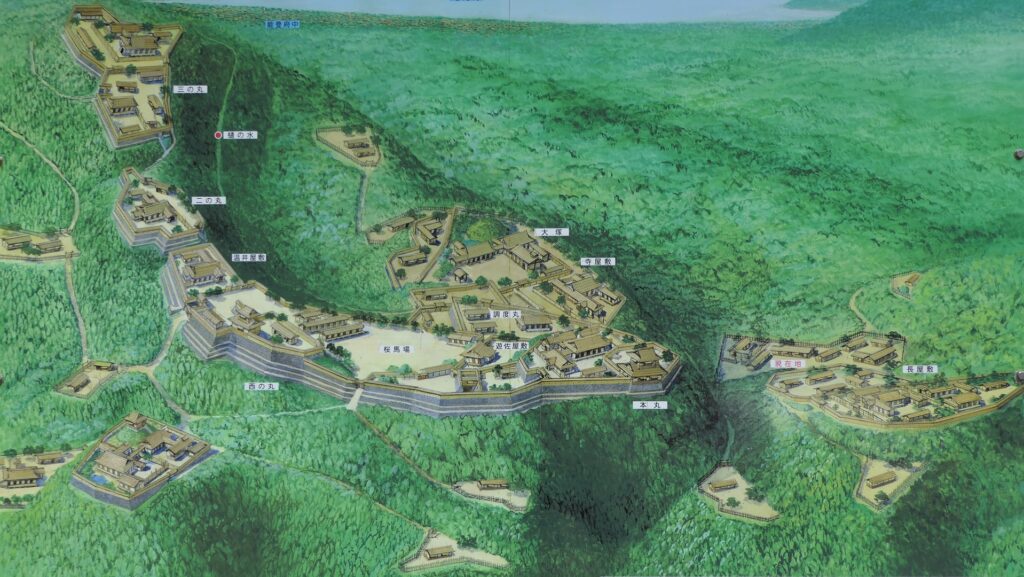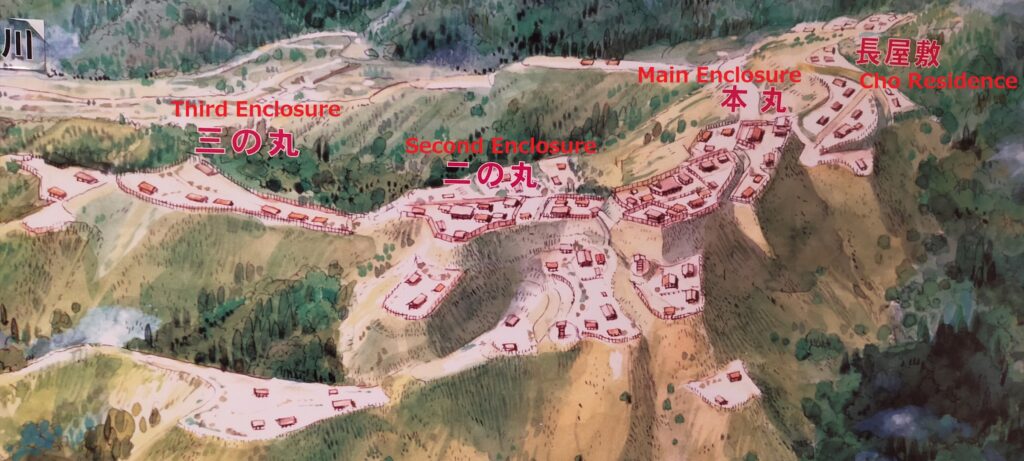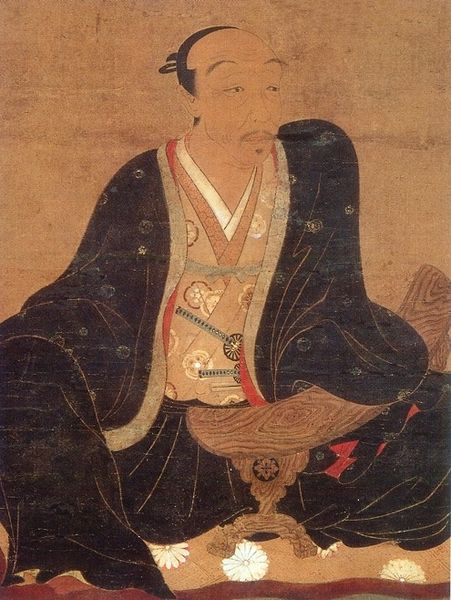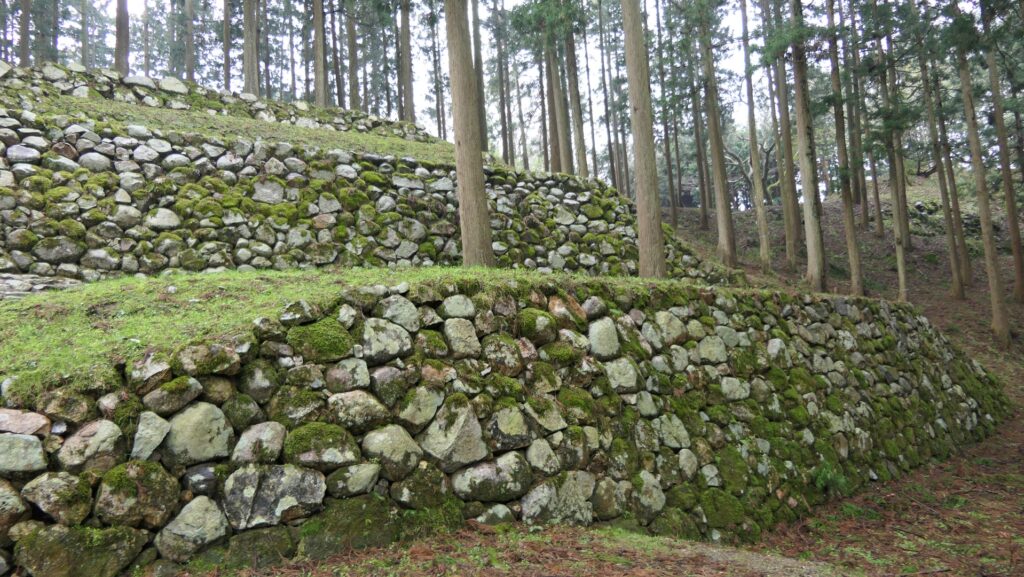Location and History
Castle on Mountain supporting Port
Hiketa Castle was located on an 82m high mountain called Shiro-yama in the eastern part of Sanuki Province which is the modern day Kagawa Prefecture. The Hiketa Port, facing the Harima Sea, beside the mountain which could prevent strong wind from blowing into the port. The port became popular amongst ships waiting for favorable wind from the Ancient Times. It was said that the mountain was also used as a fire beacon platform at that time. In the Middle Ages, several lords used the mountain as Hiketa Castle. For example, in 1583, Hisahide Sengoku under the ruler, Hideyoshi Toyotomi fought with Motochika Chosogabe using Hiketa Castle. Overall, the castle was used whenever it was needed. It was built with natural terrain.
The location of the castle The aerial photo around the castle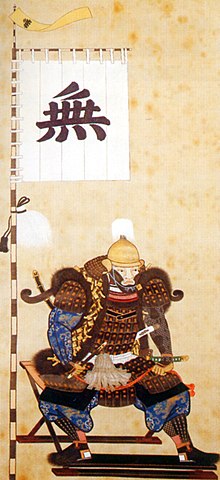
One of Important Branch Castles in Sanuki Province
During the unification of Japan, Hideyoshi gave Sanuki Province to his retainer, Chikamasa Ikoma in 1587. Initially, Chikamasa lived in Hiketa Castle, but soon after that, he moved to another one, and finally built Takamatsu Castle as his new home base. However, Hiketa Castle was maintained as one of the branch castles of Takamatsu Castle. The stone walls were built surrounding the enclosures on the top of the mountain. Part of them still remain on the mountain. They were specifically built in places where visitors often came and local people could look up from the foot of the mountain. That was the way for Hideyoshi and his retainers to show their authority to the people in their new territories. It was said that the way originated from the castles like Nobunaga Oda’s Azuchi Castle and Nagayosi Miyoshi’s Imori Castle.
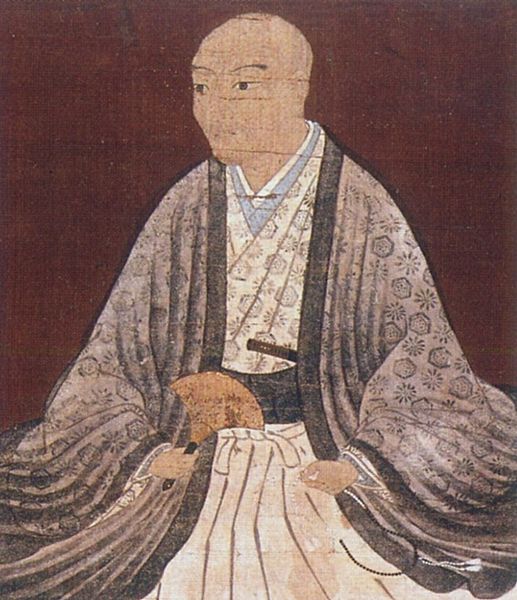


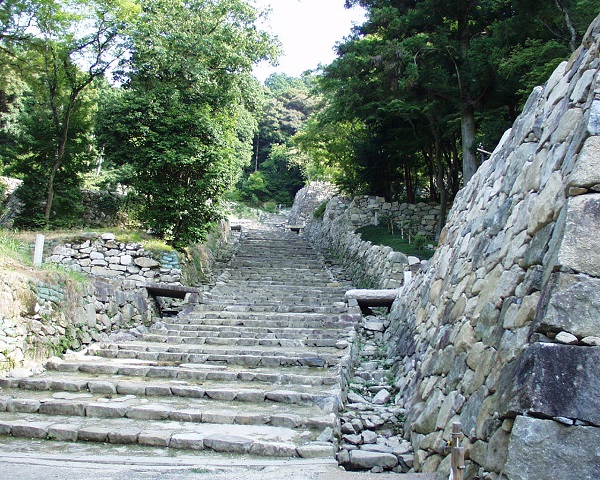
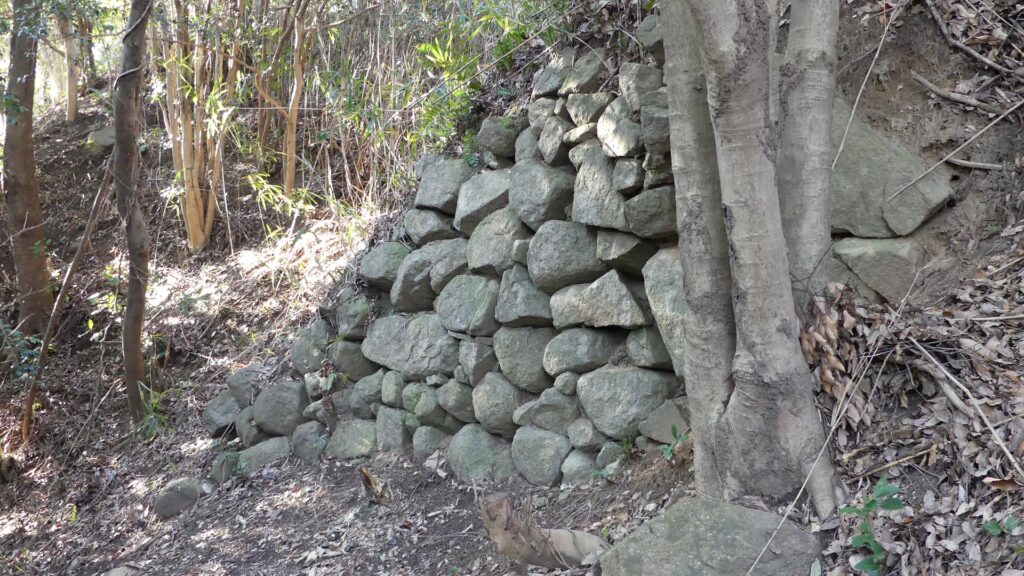
Some castle buildings were also built on the enclosures, but the details are uncertain because none of them remained. However, it was thought that the buildings looked like those of Takamatsu Castle. That’s because the roof tiles, which were made from the same model, were excavated from both sites. That meant there might have been the three castles which had very similar appearance in Sanuki Province which the Ikoma Clan owned. They were Takamatsu Castle in the center which was their home base, Hiketa Castle in the east, and Marugame Castle, which was the other branch castle in the west. Hiketa Castle was at its peak at the beginning of the 17th Century. The castle town was also built beside Hiketa Port.
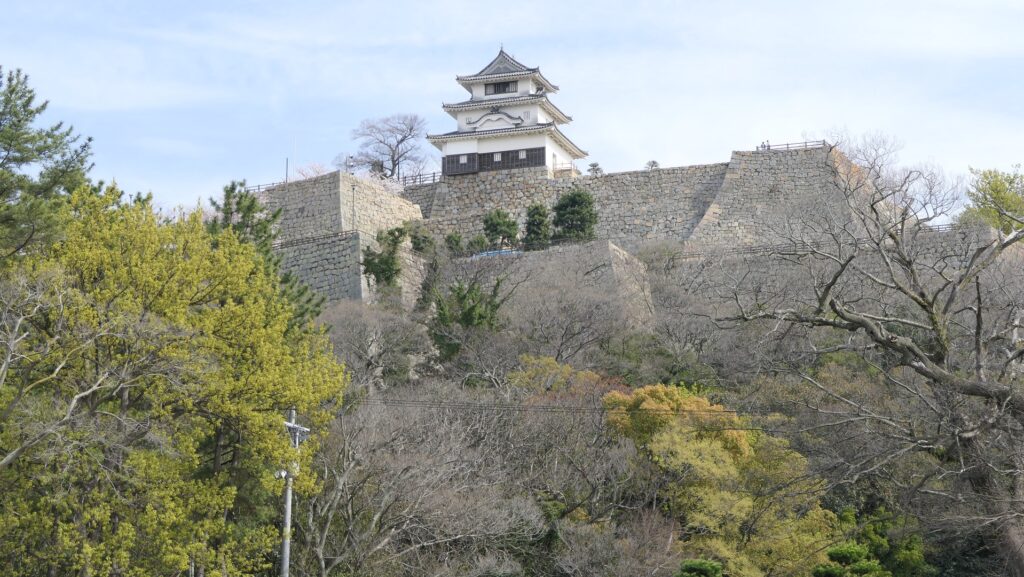
Abandoned by Law of One Castle per Province
However, Hiketa Castle was abandoned in 1615 due to the Law of One Castle per Province which was created by the Tokugawa Shogunate. Only Takamatsu Castle was allowed to be used from then on. Marugame Castle was once abandoned at the same time as Hiketa Castle. However, Marugame Castle was rebuilt when Sanuki Province was divided by other lords later on. As a result, Hiketa Castle was the only castle that had peace and quiet and stayed idle eventually becoming forgotten for a long time.
